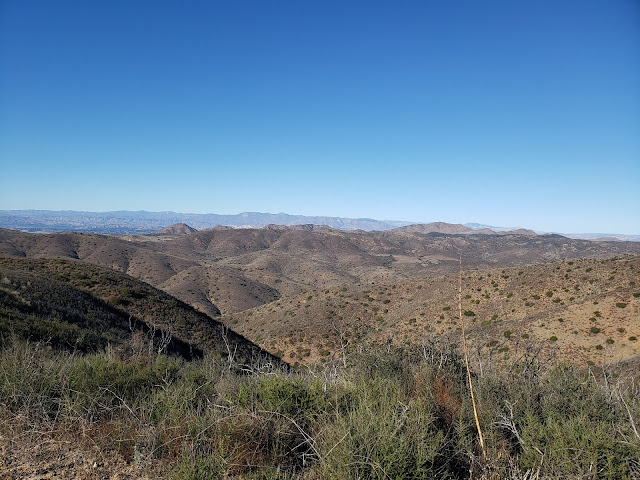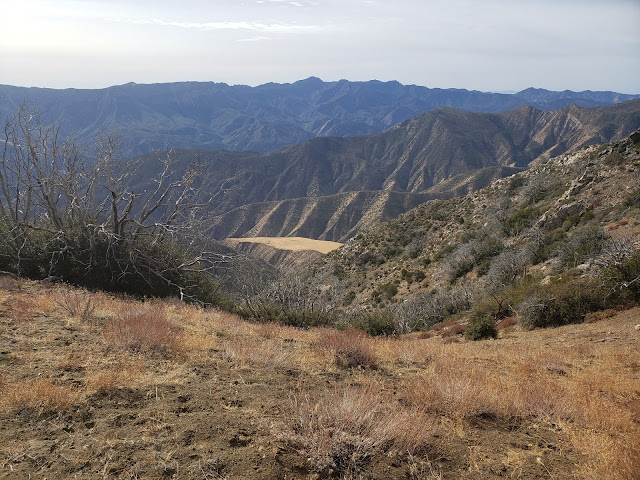Who needs wilderness? Civilization needs wilderness. The idea of wilderness preservation is one of the fruits of civilization, like Bach's music, Tolstoy's novels, scientific medicine, novocaine, space travel, free love, the double martini, the secret ballot, the home and private property, the public park and public property, freedom of travel, the Bill of Rights, peppermint toothpaste, beaches for nude bathing, the right to own and bear arms, the right to not own and bear arms, and a thousand other good things one could name, some of them trivial, most of them essential, all of them vital to that great, bubbling, disorderly, anarchic, unmanageable diversity of opinion, expression, and ways of living which free men and women love, which is their breath of life, and which the authoritarians of church and state and war and sometimes even art despise and always have despised. And feared.~Edward Abbey, Freedom and Wilderness, Wilderness and Freedom
To those devoid of imagination, a blank place on a map is a useless waste; to others, the most valuable part.
~Aldo Leopold, A Sand County Almanac and Sketches Here and There
There exists in contemporary American society a school of thought that teaches the pernicious idea that we the people hold title to far too much green and brown land. Too much open space where flora and fauna and freedom and frivolity and fun and fantasy can flourish. Whether in the form of regional parks, state parks, national parks, national forests, national recreation areas, national monuments, state beaches, national shorelines, conservation areas, or designated wilderness, the thinking is that all of this available land, locked up as it is by an overbearing government, is simply being wasted. "Wasted" in this context meaning that the land isn't being fully exploited for financial gain by private industry - loggers, miners, farmers, ranchers, the oil industry, the energy industry, dam builders, home builders, gold course designers, solar power generators, and the like. This idea, which is incessantly peddled by the monied interests, reinforced by their political mouth-pieces, and generally accepted as Gospel truth by an alarming portion of the population, is hard-coded into the American psyche, an artifact of 19th century expansionism and the arrogant notion of "Manifest Destiny." It is particularly prevalent in the West where, fortunately, we still have large tracts of publicly-owned land to argue over.
But if this never-ending pandemic has shown us anything, it is the utter absurdity of this well-worn and tired idea. Not only do we not have too much public, open space to cavort in, we have far too little of this most-valuable commodity for a stressed population that needs an unconfined place for both therapeutic and not-so-therapeutic activities. Hiking, biking, running, camping, bird-watching, exploring, finding oneself, losing oneself, hunting, fishing, drinking beer, smoking weed, skinny-dipping, fucking. All of this, good and bad, legal and illegal, is part of the palliative of the public-lands prescription. That probably sounds a bit hyperbolic and overly-opinionated. But that's only because it's a bit hyperbolic and overly-opinionated. But it also happens to be absolutely and infallibly true.



How do I know this you might ask? Well, because I've seen it with my own eyeballs. Repeatedly. At my local trailhead. In the Angeles National Forest. In the Los Padres National Forest. In the Santa Monica Mountains. In the Sierra. And most recently, on a foray into Sycamore Canyon and it's reliably more serene offshoot, Serrano Canyon.
It was a magnificent winter day for an outing outdoors and my soul was begging for the chance to escape the mundane confines of my suburban yard which, because of the pandemic, has been mowed and trimmed and clipped and edged and mulched and weeded and watered and planted and swept to perfection. Being the stereotypical dad that I am, I like my yard to look presentable. But it's gotten to the point that I now wander my yard aimlessly, clippers at the ready, searching for unruly twigs to snip, errant weeds to yank, and any other landscaping imperfections to remedy. I then retreat to the house for about 30 minutes or so, only to return to the yard again with my clippers just in case some botanical menace has happened to spring up and take hold during my brief absence.
So on this day, I determined to escape the pathetic prison of domesticity, and my self-imposed, quasi-exile from trailheads beyond my community, and venture out into the world. I would penetrate Serrano Canyon in Pt. Mugu State Park, glory in its glory, search for Red-Legged Frogs in the remnant pools along the now dry creek-bed, frighten myself into imagining that every bird hopping around in the leaf litter was a ferocious mountain lion waiting to pounce, lollygag and luxuriate in the soft winter grass of the Serrano Valley, listen attentively to the ancient silence, and pretend that I was a noble Chumash tribesman on a vision-quest. And I fancied that I would engage in this bit of conceit without really having to see, hear, or share space with many (or any) of my fellow countrymen and women.



But those silly delusions faded into oblivion when I encountered a teeming mass of humanity clogging the coast and filling the folds, crevices, and recesses of the range that immediately fronts the Pacific. It began at at the Chumash Trail trailhead and continued unabated to Sycamore Cove. Thousands of automobiles jammed the roadway as folks desperately searched for a place to stop roadside and disembark. Those that succeeded, sat in their cars, windows down and eyes closed as the sun warmed their faces and the cool, salty breeze washed over them. Others stood at the water's edge, absorbing the blue sky and the bluer ocean whose horizon is punctuated by Anyapax and the three saints. Still others scrambled down to the sand carrying towels and umbrellas and coolers and other beach paraphernalia to find a place next to the roaring and foamy surf. Even the "lesser" beaches, the ones littered with rocks or other ocean-borne detritus, were fully occupied.
Past Thornhill-Broome, cars lined the PCH all the way to Sycamore Cove. At the great sandhill, hordes of kids and adults and seniors crawled up and down the dunes like hungry ants on sugar. At Sycamore Cove, a line of cars was queued-up at the entrance on a fool's errand to get a parking space that did not exist. On the opposite side of the road, a sign at Sycamore Canyon indicated that the lot there was similarly "full." Paradise has never been easily attainable, but on this day, attainment was virtually impossible.
Dejected, I turned around and contemplated just going back home to pout. But on a pass going north, I spied someone pulling out of a legal spot on the other side of the road. Despite high demand, these legal spots along the PCH are in shorter supply these days ever since CalTrans posted "No Parking" sign all up and down the coast. It's a dirty and sinister ploy which foists upon "we the people" the Hobson's Choice between the paid lots or a ticket. Either way, you pay the king's ransom for the privilege of stepping onto your public land. I made a dangerous U-turn and pulled in to the open spot before anyone else could. Fuck the state of California and its sordid and transparent revenue-generating schemes.



Away from the coast, within the shaded confines of Sycamore Canyon proper, the automobile was replaced by the bicycle. Here, a steady stream of cycling enthusiasts cruised up and down the canyon in groups of two, three, four, and more. Sycamore Canyon has always been an attractive haven for cyclists, but on this day, the bi-pedal traffic was uncharacteristically heavy. A good distance up the valley, I ducked into the wilderness, Serrano Canyon, which is closed to bikes and is too distant for most casual hikers. Here, the traffic by-and-large finally subsided.
This is no way to run a public-land asylum. Every inch of the public domain everywhere is being lovingly mauled to death by the American public and foreign visitors. There simply isn't enough room for us to all get away from each other. And the problem is not unique to Southern California. Our national parks are literally being overwhelmed with
visitation spiking significantly nationwide. It has gotten to the point that we now have lotteries that you must enter and win in order to experience some of our more high-profile and eye-popping places (e.g., Mt. Whitney, the cable route to Half Dome, etc.). These are the types of places that
Mark Kenyon has said "physically move you, creating a tightening in the chest, a loss of breath, or a tingling along the spine."
But politicians of a particular persuasion don't want you to believe what your lying eyes are showing you. Instead, they want you to buy off on the notion that we actually have way too much public land, especially wilderness which Senator Mike Lee (R-UT) dismissively refers to as the
"royal forest." Invoking the bogeyman of feudalism, Mr. Lee and his adherents attempt to leverage the specter of craft beer-swilling, artisanal coffee-drinking "elites" to encourage the idea that such lands are neither intended for, nor open to the the archetypal everyman.
I'm not sure that I know what an "elite" looks like, especially on the trail, and I didn't realize that the litmus test for being an "elite" was avoiding Miller Beer and Folgers coffee, but I do know this to be complete and utter bullshit. Putting aside for the moment the fact that
only 5% of the land in America is designated as wilderness (2.7% if you exclude Alaska), and
18% of national forest lands are designated wilderness, the folks I have seen and shared the backcountry with have been quite a varied group - young, old, white, black, Hispanic, Asian, conservative, progressive, on horseback, on foot, armed, unarmed, well-equipped, ill-equipped, formally-educated, uneducated, seemingly wealthy, and seemingly less-wealthy. We're all there, bumping into each other and enjoying the outdoors that Mr. Lee fantasizes has been locked-up for use only by the "elites."
Edward Abbey once said "better a cruel truth than a comfortable delusion." So regardless of whatever label you want to pin on the people using the outdoors, here's the cruel truth: there isn't sufficient wild, undeveloped, open space to comfortably support the number of "elites" and "non-elites" who want to enjoy it. And we can't simply create more land out of thin air or whole cloth or whatever idiom you want to use. Another cruel truth. So what we're left with is making certain that we preserve the limited open space that we fortunately still have. Because barring an unimaginable loss of life beyond what we have already experienced due to the pandemic, or a radical reconfiguration of our ideas and attitudes about procreation, we're going to want and need that open, public land for both our physical well-being and our mental health. Because as Henry David Thoreau said, in "wildness is the preservation of the world."


























































